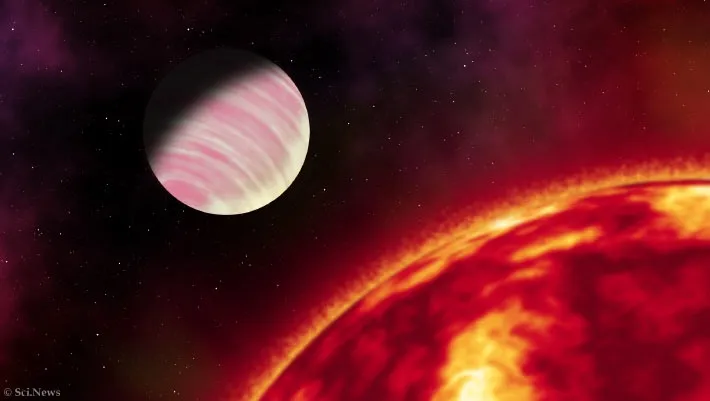Astronomers Discover a Warm Jupiter-Sized Young Exoplanet: TOI 4862 B
In a groundbreaking discovery, astronomers have detected a young, warm Jupiter-sized exoplanet orbiting a distant star. The newly identified planet, named TOI 4862 B, adds to the growing list of alien worlds identified by NASA’s Transiting Exoplanet Survey Satellite (TESS). This finding provides deeper insights into planetary formation and evolution, particularly for gas giants beyond our solar system.

TOI 4862 B: A Giant in a Distant Star System
A team of astronomers led by Matthew Batley of the University of Geneva, Switzerland, confirmed the existence of TOI 4862 B, which is similar in size and mass to Jupiter. The planet exhibits moderate eccentricity (0.294) and an equilibrium temperature that varies between 274K and 500K over its orbit.
The discovery was first noted through a single transit event observed by TESS, prompting researchers to investigate further using archival photometry from NGTS and YolaCam to refine its planetary period.
The Role of TESS in Exoplanet Discoveries
NASA’s TESS mission has played a crucial role in the detection of exoplanets. Since its launch, it has identified over 7,100 exoplanet candidates, out of which 432 have been confirmed.
TESS primarily surveys 200,000 of the brightest stars near the Sun, looking for planets through the transit method, where periodic dips in a star’s brightness indicate the presence of an orbiting planet.
- TESS Prime Mission: Ended on July 4, 2020, but continues in an extended phase.
- Mission Goals: Identify small rocky worlds, gas giants, and planets of various compositions to expand our knowledge of planetary systems.
Why TOI 4862 B is Important
The discovery of TOI 4862 B is significant as it contributes to our understanding of planetary diversity. Scientists believe that studying young gas giants like TOI 4862 B can help answer key questions, such as:
- How do Jupiter-like exoplanets form?
- How do they evolve over time in different star systems?
- What atmospheric conditions exist on such planets?
Given that TOI 4862 B orbits a G-type star located 762 light-years away, researchers are keen to analyze its atmosphere, composition, and orbital characteristics further.
The Future of Exoplanet Exploration
With new discoveries like TOI 4862 B, astronomers continue to unravel the mysteries of the cosmos. Upcoming missions like the James Webb Space Telescope (JWST) will allow scientists to examine exoplanetary atmospheres in greater detail, potentially detecting water vapor, methane, or even signs of habitability.
The vast diversity of exoplanets being discovered showcases the incredible complexity of planetary systems beyond our own. Will future missions uncover even more Earth-like worlds? The search continues!
What are your thoughts on this incredible discovery? Could warm Jupiter-like exoplanets hold secrets about the formation of gas giants? Share your insights in the comments below!
What's Your Reaction?

















